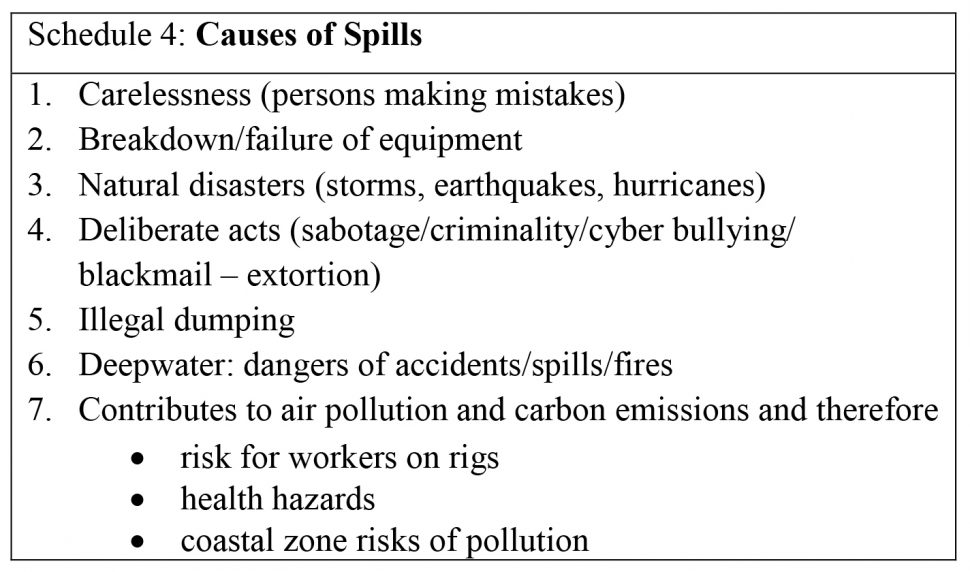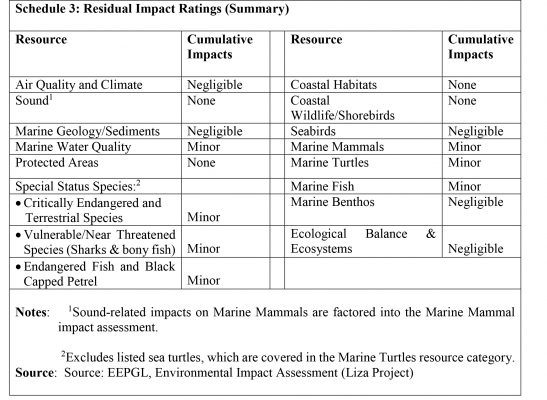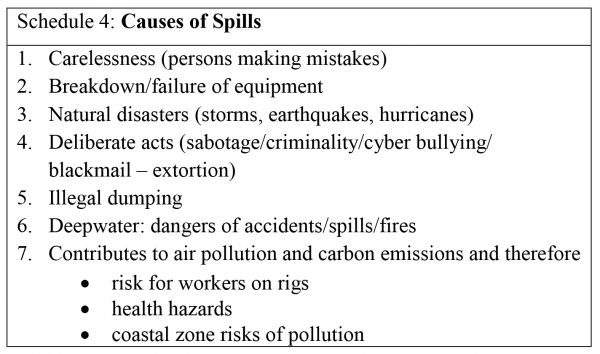Today’s column summarily considers the two remaining existential threats to Guyana’s coming petroleum sector, which I have identified for the Road Map; namely: 1) a cataclysmic environmental event occasioned by petroleum extraction, and 2) the geo-strategic spillover from domestic political strife/conflict. ExxonMobil recognises the former risk and has publicly committed itself “to operate in an environmentally responsible manner.” Its parent company’s operational mantra for the environment is: Protect Tomorrow Today. This mantra embodies four core elements: 1) safeguarding ecosystem services; 2) managing biodiversity in varying environments and habitats; 3) reducing environmental accidents through “superior performance;” and 4) full compliance with national laws and global best-practices. For this purpose, Exxon has conducted Environmental Impact Assessments (EIA) on the Liza 1 & 2 projects. However, for myself, because the existential threat resides in a rare cataclysmic event; it falls outside the scope of typical EIA’s probability determinations.
EIA
The features of the Liza 1 & 2 projects are summarised in Schedule 1:
The major physical and biological Resources, which Exxon’s EIA of Liza 1 and 2 took into consideration are shown in Schedule 2. These are: 1) Physical Resources: (Air Quality & Climate; Sound; Marine Geology & Sediments; and Marine Water Quality); and 2) Biological Resources: (Protected & Special Status Areas/Species; Coastal Habitats; Coastal Wildlife & Shore birds; Seabirds; Marine mammals; turtles, fish and benthos; as well as Ecological Balance & Ecosystems).
The EIA provides a summary of residual environmental impacts and ratings. These reveal that all environmental impact ratings fall in the range of none to minor!
Cataclysmic Oil Spills
Oil spills or leakages/spillages of petroleum into the offshore environment as a result of extracting oil and gas are typically unplanned events. Such spills are likely to cause the greatest damage to Guyana’s ecological balance, ecosystems, and economy. Spills from oil extraction can even affect coral reefs and marine life far afield of Guyana. Spills may also expose people to unsafe seafood further afield, if oil contaminates seafood. The literature identifies/classifies several causes for oil spills. Typically these include the seven listed in Schedule 4.
To be sure, my notion of an oil spill as an existential threat resides in the risk (an admittedly very low probability) of a catastrophic/uncontrolled oil spill, on the scale of past disasters like Deepwater Horizon. Such events are extremely rare, and go beyond the confines of 1) present considerations of Exxon’s EIA and its parent company’s insurance risk coverage; 2) whether Guyana has a viable National Oil Spill Plan; or 3) support promised Guyana from external bodies or international agency.
National Strife
Finally, and very briefly the third existential threat (national strife/conflict) never crossed my mind, until recently — a few weeks ago. Presently I believe that the level of domestic political strife, mixed with calls by a former president for sanctions on Guyana, and coming as it does, on the eve of Guyana’s first oil has dramatically challenged risk assessment. The history of oil is such that any opening, which creates opportunities for external geopolitical influences to become involved, can spiral out of control and become deadly. Further, there is the danger of a synergistic convergence of this with the Venezuelan threat. I make this observation, given 1) Venezuela’s territorial claim to the recently discovered petroleum reservoirs; 2) the controversial historic role of Exxon in Venezuela; and 3) the potential emergence of Guyana as a major petroleum player in the hemisphere.
Conclusion
For the time being, this is all I wish to present in order to draw attention to Guidepost 4 of the Road Map and, therefore, the three existential threats to the materialisation of Guyana’s petroleum sector. Next week, I turn to Guidepost 5, which considers the capabilities of the present leading Contractors (Companies) leading the development of Guyana’s petroleum sector.











